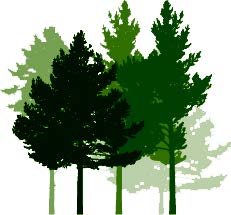Search technical reports
The decay resistance of some wood species used as framing - Progress report on the condition of samples
By Ian Simpson and Tripti Singh, September 2018.
Download SWP-T064 (pdf)
Executive summary
Sets of framing samples were exposed in high humidity conditions of 85-90% relative humidity and 25 – 27°C. The species included in this test were:
- untreated Cupressus lusitanica
- untreated Douglas-fir
- untreated Eucalyptus nitens (installation was delayed by approximately six months)
- untreated Eucalyptus regnans
- H1.2 treated radiata pine, and
- untreated radiata pine.
All the samples were periodically sprayed with water at approximately two weekly intervals to maintain the wood moisture content at a level suitable for decay to progress. Before exposure in the high humidity condition, samples were also soaked in water for two hours.
The method of testing followed the procedure described in Australasian protocols in this case for the Hazard class H1.2. This test method simulates the common framing joint in house framing between studs and plates, where in a leaky building, moisture may become trapped and provide suitable conditions for fungi to establish.
After twelve month’s exposure (in high humidity condition and including regular spraying with water on the test samples);
Mycelium had developed on many of the samples of Cupressus lusitanica, Douglas-fir, and Eucalyptus regnans.
Decay had developed in many of the samples of Cupressus lusitanica, Douglas-fir, and Eucalyptus regnans.
None of the boron treated radiata pine had decay, however one of the samples was showing the early signs of suspected soft rot. Severe mould had grown on many of the boron treated radiata pine samples.
After six month’s exposure (in high humidity condition and including regular spraying with water on the test samples);
Decay had developed in many of the Eucalyptus nitens samples.
Decay had developed in all of the untreated radiata pine sapwood samples.
After assessment, the samples were restacked and exposure to the high humidity conditions was continued. The samples will be assessed after two years exposure and recommendation for the suitability of the product for framing will be made at this time.

 Specialty Timbers New Zealand
Specialty Timbers New Zealand
4 posts.
Post from Dean Satchell on May 26, 2019 at 8:17PM
The SWP board released this report to the NZS 3602 standards committee on 17 May, with a covering letter describing the report as preliminary. It was not intended that the standards committee would use this report for decisions on inclusion or exclusion of any of the species being tested. This report uses a similar materials test, so a "reference material" is required, one which is already in the standard and is therefore an acceptable solution for the application. Durability performance is compared and could form the basis for an application to include the new species in the standard. Lusitanica cypress heartwood is allowed for timber framing (so is a reference material). Eucalyptus regnans is not in NZS 3602 for heartwood framing.
The Protocols for assessment of wood preservatives (AWPC protocols) were used for preparing and assessing decay of the ten "I" frame samples for each type of wood. Each end of the "I" frame was inoculated with either Antrodia xantha (Ax) or Oligoporus placenta (Op) (two types of brown rot fungi associated with decay in wet framing).
Lusitanica cypress
The question is whether the accuracy of this report can be relied on to guide the standards committee, who could decide to remove C. lusitanica heartwood from NZS 3602 as not sufficiently durable for framing, given that the durability performance of some of the ten samples tested appears questionable. However, being a similar materials test the only basis for failing lusitanica would be to compare lusitanica with boron treated H1.2 radiata pine. This would be unacceptable to industry because they are not similar materials (boron is leachable and the test does not include leaching as a variable).
There are also a number of anomalies contained within this report. In my view it should not form the basis for decisions on building code compliance until the anomalies it contains are addressed through further research. Indeed there are many questions that require answers before these results can be finalised, including the verification of these preliminary results through replication. Confirmation that "heartwood" samples were really heartwood is clearly required given the array of results, including wide variations in performance between "heartwood" samples, along with the insignificant variation between all-heartwood samples and heartwood/sapwood samples. Industry will clearly require more work and a part to play in preparing further samples for testing, with clear delineation of heartwood and sapwood for decay comparison, before accepting performance test results for the species in question, given the implications for such tests potentially being the basis for removing a species from use in structural building applications, despite a long history of use without any recorded failures.
A number of typographical, grammatical and factual errors are also present in the above report. For example, seven corrections are made to Table 2 below for the reader:
citanica7.58.85.05.95.14.24.84.46.95.48.36.9This report should clearly be adequately reviewed before releasing to a body who might use it for decision making.
The above table shows three samples with little decay at one end and significant decay at the other end. Although the different species of fungi could be implicated in such wide variation in decay, this is not consistent across the samples. Indeed, average decay does not appear to be significantly different between species of fungi and the two heartwood samples with the greatest levels of decay do not show observable differences between species of fungi:
In contrast, the heartwood/sapwood samples either:
Indeed these samples had similar levels of decay caused by both of the two different fungi, suggesting that another variable is responsible for the level of decay (e.g. level of sapwood).
In the above example it appears that the presence of sapwood (rather than species of fungi) is more likely to be causing decay. However, quantity or position of sapwood in each sample is not recorded, therefore it is not known whether sapwood or heartwood is responsible for the deep decay, which is what is required for such an experiment to produce useful results.
The above examples show that deeper decay has occurred. However, none of this decay is necessarily heartwood and the relevance cannot be assessed because the sapwood/heartwood interface is not marked on the boards. The expectation is that sapwood would rapidly decay under the accelerated framing test conditions, but compared with what under this similar materials protocol? Then, is the heartwood decaying also, and what is the rate of decay of the "outer" heartwood?
One would expect this type of experiment to differentiate between levels of heartwood and sapwood decay, because sapwood is perishable; whereas the relative level of heartwood durability is actually what should be determined. Indeed, from the above results, the only conclusion that can be drawn is that the experiment should be repeated, this time ensuring that:
Growers depend on tests that are accurate, represent the population and depict what can be expected in service for the species.
Eucalyptus regnans
What is most interesting about these samples and types of wood (heartwood and heartwood/sapwood) is that the samples containing sapwood on average had a higher level of durability (at both ends for both surface and joint decay) than the pure heartwood samples. This rings alarm bells for me and calls into question the experimental procedures used by Scion. Clearly the tests need to be repeated, this time with attention to careful segregation of heartwood and heartwood/sapwood samples to a standard acceptable to industry. Industry would expect the results to show the obvious, that sapwood decays considerably faster than heartwood. This report either shows that the AWPC test methods are not adequate for testing natural durability or that segregation of heartwood and sapwood was not adequate. That one of the heartwood/sapwood samples (416) retained an index of condition of 10 for surface and joint decay at both ends suggests that something has gone very wrong with this experiment.
Conclusions
This report forms the first step of a work in progress and should not form the basis of NZS 3602 Standards committee decisions. The science is incomplete and the suitability of the AWPC test has not been determined for comparing natural durability with boron treatment. Until we have a satisfactory test and the work is completed, judgment should be reserved for these species.
Human error is commonplace in any work environment, which is why scientific tests sometimes need to be replicated sufficiently before claims are made with respect to validity of the results. The expectation is that the reader of this report respects the inconclusiveness of the results presented in this preliminary study, which only suggest that there is more work to do, both in test methodology and replication of the experiment to produce results suitable for decisions on building code compliance of the material(s) in question.
Post from Vaughan Kearns on July 30, 2019 at 4:01PM
Well I have read through the above report and have come to terms with the scientific jargon.
It keeps begging the question, Why release an interim report.?
l liken it to reading a sports report and coming across a heap of half time results.
The fact that the standards committee are using this information instead of consulting the experts in this field ,the sawmillers that have been selling it for decades, gets me rather cantankerous.
Post from
We cannot afford to have a building code that is founded on inaccurate research and reporting. Scion may argue that this is a trivial case, but the principle is unyielding. If this error one is disregarded, others may be disregarded.
Post from Patrick Milne on July 20, 2020 at 8:41PM
I’ve just read this durability report and looking at the regnans result in particular – to me the results for both the heartwood and heartwood/sapwood samples are quite similar – I wouldn’t have thought the assessment methods used were sharp enough to identify anything other than obvious differences between the samples. There’s no replication or statistical significance reported for the assessments and as a result it’s a pretty meaningless study – it looks shabby.
Add a post